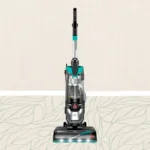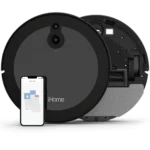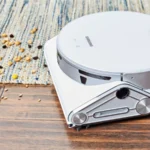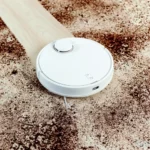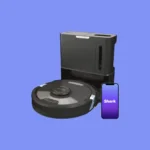The battle against allergies and asthma can be overwhelming for anyone who suffers from these conditions. Keeping allergens at bay can seem like a never-ending battle, but don’t lose hope just yet! In recent years, the rise of technology has introduced a new player in the fight against allergens – the Quiet Smart Vacuum Cleaner. With their advanced features and efficient cleaning capabilities, these vacuums have quickly become a must-have for anyone looking to improve their indoor air quality. In this article, we’ll dive deeper into the benefits of Quiet Smart Vacuum Cleaners for allergy and asthma sufferers and provide tips on how to maximize their effectiveness. So, buckle up and get ready to breathe cleaner air!
What Causes Asthma and Allergies?
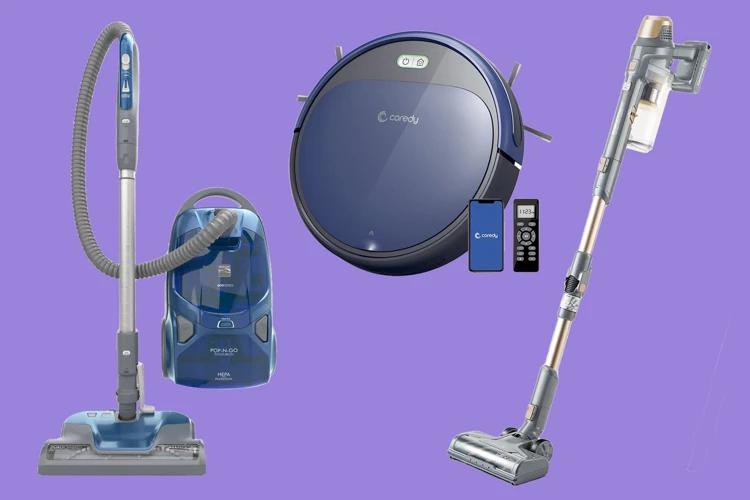
Every year, millions of people around the world struggle with allergies and asthma. These conditions can significantly reduce the quality of life, making it harder to breathe and causing constant discomfort. Unfortunately, there are numerous causes of allergies and asthma, including dust mites, pet allergens, pollen, and mold. For people who are trying to manage these conditions, finding effective ways to reduce exposure to allergens is essential. One such solution for managing allergies and asthma is through the use of Quiet Smart Vacuum Cleaners, and we will delve deeper to discuss how they can help alleviate the symptoms of asthma and allergies. Stay updated with the latest models of quiet smart vacuums available to combat dust allergies through the internal link: Quiet Smart Vacuum Cleaners for Allergies and Asthma.
Dust Mites
Dust mites are tiny pests that can cause big problems for people who suffer from allergies and asthma. They are microscopic creatures that live in house dust and feed on dead skin cells from humans and animals. Dust mites thrive in warm, humid environments like bedding, upholstered furniture, and carpets.
According to the American College of Allergy, Asthma, and Immunology, dust mites are a common cause of allergies and asthma. In fact, they can be found in almost every household. They can cause a variety of symptoms including sneezing, runny nose, stuffy nose, itchy eyes, and even breathing difficulties.
One way to reduce exposure to dust mites is to use a quiet smart vacuum cleaner. The HEPA filter in a smart vacuum cleaner can trap tiny particles, including dust mites and their waste. A vacuum cleaner with a strong suction power can effectively remove dust mites from carpets, upholstery, and bedding.
Here’s a table summarizing how dust mites affect people with allergies and asthma:
| Allergy and Asthma Symptoms Caused by Dust Mites |
|---|
| Sneezing |
| Runny nose |
| Stuffy nose |
| Itchy eyes |
| Breathing difficulties |
Choosing the right vacuum cleaner is crucial for reducing exposure to dust mites. A quiet smart vacuum cleaner can clean effectively without disturbing the family. If you want more information on how smart vacuum cleaners can reduce asthma and allergy symptoms, you can read our article “Smart Vacuum Cleaners: Reducing Asthma and Allergy Symptoms” or if you want to know which is the best quiet vacuum for allergies, check out our article on “Best Quiet Vacuum for Allergies”.
Pet Allergens
Pets are often our best friends, but unfortunately, they can also be a source of allergens for some people. Pet dander from cats, dogs, and other furry animals are common allergens that can cause sneezing, wheezing, and itchy eyes in allergy sufferers. Here are some facts about pet allergens that you should know:
– Pet dander is made up of tiny flecks of skin shed by cats, dogs, and other animals.
When pets groom themselves, their saliva and urine can also contribute to the spread of allergens in the environment. Pet dander can get trapped in carpets, furniture, and other surfaces, making it difficult to control.
– People with pet allergies can experience symptoms ranging from mild to severe.
Symptoms of pet allergies can include sneezing, runny nose, itchy eyes, and skin rash. In severe cases, pet allergens can trigger asthma attacks, which can be life-threatening. It’s important for allergy sufferers to take measures to reduce their exposure to pet allergens.
– Quiet Smart Vacuum Cleaners with HEPA filters can help control pet allergens in your home.
Quiet Smart Vacuum Cleaners with HEPA filters are designed to capture small particles like pet dander and other allergens. The HEPA filter traps these particles inside the vacuum cleaner, reducing their presence in your home. This can help allergy sufferers to breathe easier and reduce the risk of asthma attacks.
– Regular vacuuming is important for controlling pet allergens in your home.
Vacuuming regularly with a Quiet Smart Vacuum Cleaner can help control the spread of pet dander in your home. Make sure to vacuum carpets, furniture, and other surfaces where pet dander can accumulate. Empty the dustbin frequently to prevent allergens from re-entering your home environment.
If you are an allergy sufferer with pets in your home, a Quiet Smart Vacuum Cleaner with HEPA filters can be a useful tool to help you control pet allergens and breathe easier. For more information on how Quiet Smart Vacuum Cleaners can benefit those with allergies and asthma, check out our related article.
Pollen
Pollen is a common allergen that affects many people. It’s produced by plants as part of their reproductive process and is carried by the wind. Pollen allergies can cause a range of symptoms, from sneezing and runny noses to itchy eyes and throat irritation.
What is Pollen?
Pollen is a fine powder that is produced by the male parts of a plant’s reproductive system. It contains the plant’s sperm cells and is used to fertilize the female parts of the plant. Pollen is usually carried by wind, bees, or other insects to reach its destination. While it’s necessary for plant reproduction, pollen can cause health problems for those who are allergic to it.
How Does Pollen Cause Allergic Reactions?
When pollen is inhaled, it can trigger an allergic reaction in some people. The body’s immune system reacts to the pollen as if it were a harmful substance, and produces antibodies to fight it off. This response can cause inflammation, leading to symptoms such as sneezing, runny nose, and itchy eyes.
How can Quiet Smart Vacuum Cleaners help with Pollen Allergies?
Quiet Smart Vacuum Cleaners can effectively remove pollen from surfaces, reducing exposure to this common allergen. When using a vacuum cleaner, it’s important to choose one with a HEPA filter, which can capture and trap pollen particles, preventing them from being released back into the air.
Here are some additional tips for using Quiet Smart Vacuum Cleaners to reduce pollen exposure:
| Tips for Using Quiet Smart Vacuum Cleaners for Pollen Allergies |
|---|
| 1. Vacuum regularly |
| Regular vacuuming can remove pollen and other allergens before they have a chance to accumulate. Aim to vacuum at least once a week, or more frequently during allergy season. |
| 2. Use appropriate attachments |
| Use attachments such as crevice tools and upholstery tools to clean hard-to-reach areas where pollen can accumulate, such as curtains and furniture. |
| 3. Change filters regularly |
| HEPA filters should be changed regularly to ensure they are trapping pollen as effectively as possible. Check your vacuum’s owner’s manual for guidance on how often to change the filter. |
| 4. Empty the dustbin frequently |
| Pollen and other allergens can accumulate in the vacuum’s dustbin, so it’s important to empty it frequently to prevent these particles from being released back into the air. |
By using a Quiet Smart Vacuum Cleaner with a HEPA filter, following these tips, and taking other precautions, you can help reduce your exposure to pollen and other allergens, and alleviate your symptoms.
Mold
Mold is another common trigger for asthma and allergies. Mold spores can be found in damp indoor environments, such as bathrooms, kitchens, and basements. Exposure to mold can result in symptoms such as a runny nose, itchy eyes, and even respiratory problems.
What exactly is mold?
Mold is a type of fungus that grows in damp environments. It can appear as a green, black, or white fuzzy substance on walls, ceilings, and other surfaces. Mold reproduces by releasing spores into the air, which can then be inhaled by humans and animals.
What are the health effects of exposure to mold?
For people with allergies or asthma, exposure to mold can cause a variety of symptoms, including nasal congestion, coughing, chest tightness, and wheezing. In severe cases, mold exposure can lead to more serious respiratory problems, such as bronchitis or pneumonia.
How can Quiet Smart Vacuum Cleaners help with mold?
Quiet Smart Vacuum Cleaners equipped with HEPA filters can effectively capture mold spores and prevent them from being released back into the air. HEPA filters are designed to trap microscopic particles, such as mold spores, pollen, and pet dander, which can cause allergies and asthma symptoms.
In addition to HEPA filters, some Quiet Smart Vacuum Cleaners also come with UV-C light technology, which can kill mold spores and other allergens on contact. UV-C light is effective at breaking down the DNA in mold spores, preventing them from reproducing and causing further health problems.
To get the most out of your Quiet Smart Vacuum Cleaner when dealing with mold, it’s important to vacuum regularly and focus on areas where moisture is present. Using appropriate attachments can also be helpful, such as a crevice tool for getting into tight spaces or a dusting brush for gently cleaning mold off of surfaces.
If you’re someone who suffers from allergies or asthma, investing in a Quiet Smart Vacuum Cleaner with HEPA filters and other smart features can help to reduce exposure to mold and other allergens, leading to improved air quality and easier breathing.
Why choose Quiet Smart Vacuum Cleaners?
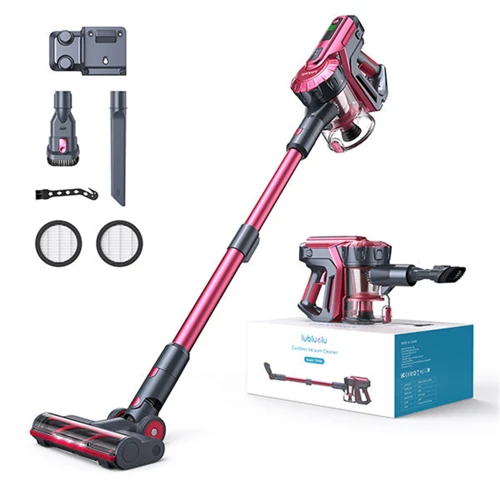
If you’re in the market for a new vacuum cleaner, you might be wondering why you should choose a quiet smart vacuum over a regular one. The answer is simple: quiet smart vacuums offer a range of benefits that traditional vacuums simply can’t match. With features like quiet operation, HEPA filters, efficient cleaning, and smart technology, these vacuums are designed to make your life easier while also keeping your allergies and asthma symptoms at bay. Let’s take a closer look at what makes quiet smart vacuums such a great choice for anyone who suffers from allergies or asthma.
Quiet Operation
One of the key benefits of a quiet smart vacuum cleaner for allergy and asthma sufferers is the quiet operation. These vacuums are designed to operate at a lower noise level than traditional vacuum cleaners, which is beneficial for a number of reasons.
Less Disturbance
In a home with allergy or asthma sufferers, it’s important to minimize disturbance as much as possible. Loud noises, such as those produced by a traditional vacuum cleaner, can cause stress and anxiety for those with respiratory issues. A quiet smart vacuum cleaner allows for thorough cleaning without the added stress of a loud noise.
Less Disruption
A vacuum cleaner that operates quietly is also less disruptive to other activities happening in the home. With a traditional vacuum cleaner, it’s difficult to hold a conversation or watch television while someone is cleaning. Conversely, with a quiet smart vacuum cleaner, one can go about their daily activities without being disrupted by the sound of cleaning.
Less Irritation
Additionally, a quiet smart vacuum cleaner is less likely to cause irritation to anyone in the home. Traditional vacuum cleaners can produce a lot of dust and debris as they clean, which can exacerbate allergies and asthma symptoms. A quiet smart vacuum cleaner, on the other hand, produces less dust and debris, making it a healthier option for everyone.
Overall
A quiet smart vacuum cleaner is a great choice for anyone with allergies or asthma. It reduces stress and anxiety caused by loud noise, minimizes disruption to daily activities, and produces less dust and debris, which improves air quality in the home.
HEPA Filters
HEPA (High-Efficiency Particulate Air) filters are a crucial feature of quiet smart vacuum cleaners for allergy and asthma sufferers. These filters trap tiny particles, including dust mites, pet allergens, pollen, and mold spores, and prevent them from being released back into the air. This has several benefits for people with allergies and asthma:
| BENEFIT | DETAILS |
| Reduces Exposure to Allergens | HEPA filters capture 99.97% of particles as small as 0.3 microns, including those that trigger allergies and asthma |
| Improves Air Quality | HEPA filters ensure that the air expelled from the vacuum cleaner is free of allergens, improving the quality of indoor air |
| Eases Symptoms | Reducing exposure to allergens can ease common symptoms of allergies and asthma, such as coughing, sneezing, and shortness of breath |
The use of HEPA filters is especially beneficial for those with allergies or asthma because it helps reduce the amount of exposure to airborne allergens. When allergens, such as dust and pet dander, are disturbed, they can quickly become airborne and trigger symptoms in sensitive individuals. By using a vacuum cleaner with a HEPA filter, these allergens are filtered out of the air, helping to reduce exposure and make the air safer to breathe.
It’s important to note that while HEPA filters are highly effective, they do require regular maintenance. Over time, the filter will become clogged with particles and need to be replaced. Most vacuums with HEPA filters include indicators to let users know when it’s time to change the filter, but it’s always a good idea to check the manufacturer’s instructions for recommended maintenance. By keeping the filter clean and well-maintained, users can ensure that their vacuum is performing at its best and providing optimal allergen-reducing benefits.
Efficient Cleaning
One of the top benefits of using quiet smart vacuum cleaners for allergy and asthma sufferers is that they offer efficient cleaning power. This means that they are incredibly effective at removing allergens, dust, and other particles from your floors and furniture, helping to keep your home clean and healthy.
Here are some of the ways in which quiet smart vacuum cleaners provide efficient cleaning:
- Powerful suction: Quiet smart vacuum cleaners are designed to provide powerful suction that can remove even the smallest particles of dust and allergens from your floors and furniture. This means that you can be sure that your home is getting a thorough cleaning each time you use your vacuum.
- Advanced filtration: Another key feature of quiet smart vacuum cleaners is their advanced filtration systems. Many models come equipped with HEPA filters that are designed to capture tiny particles like pollen, pet dander, and dust mites. These filters can trap up to 99.97% of particles, making sure that they won’t enter your indoor air and trigger your allergies or asthma.
- Efficient brush heads: The brush head on a quiet smart vacuum cleaner is designed to be highly efficient, with bristles that can sweep up even the smallest particles of dirt and debris. Many models come with different brush heads, such as a pet hair brush, which is designed specifically to pick up pet hair and dander from your floors and furniture.
- Smart sensors: Some of the most advanced quiet smart vacuum cleaners are equipped with smart sensors that can detect areas of your home that need more cleaning. For example, if your living room floor is heavily trafficked and full of dust, the vacuum might spend more time in that area to ensure that it is properly cleaned.
Investing in a quiet smart vacuum cleaner can provide you with efficient cleaning power that can help keep your home free of allergens and irritants. With advanced filtration systems, powerful suction, and efficient brush heads, these vacuums are designed to provide a deep clean that can ease your asthma and allergy symptoms. With the addition of smart sensors, you can be sure that every inch of your home is getting the attention it needs to be properly cleaned.
Smart Features
One of the standout features of quiet smart vacuum cleaners is their ability to incorporate smart technology into their design. These high-tech devices offer a variety of features that can enhance the cleaning experience for allergy and asthma sufferers alike.
Let’s take a closer look at some of the smart features that make quiet smart vacuum cleaners stand out from traditional models:
| Feature | Description |
| WiFi Connectivity | Some models can connect to your home’s WiFi network, allowing you to control the vacuum with a smartphone app. This can be especially helpful for those with mobility limitations or busy schedules. |
| Auto-Scheduling | Many quiet smart vacuum cleaners have the ability to create a cleaning schedule, so you don’t have to remember to clean every day. This can help reduce allergy and asthma symptoms by consistently removing allergens from your home. |
| Virtual Barriers | Some models use laser technology to create virtual barriers that keep the vacuum contained in specific areas of your home. This can be useful if you have certain rooms or areas that need more frequent cleaning due to allergies or asthma. |
| Voice Control | With the rise of voice assistants like Amazon’s Alexa and Google Assistant, some quiet smart vacuum cleaners can now be controlled with voice commands. This is a convenient feature for those who want to control their cleaning without having to physically adjust the device. |
By incorporating these smart features, quiet smart vacuum cleaners make it easier than ever to manage allergies and asthma symptoms in your home. Whether you need to clean more frequently or want to remotely control your vacuum, these devices provide a variety of options to fit your needs.
Benefits of using Quiet Smart Vacuum Cleaners for Allergy and Asthma Sufferers
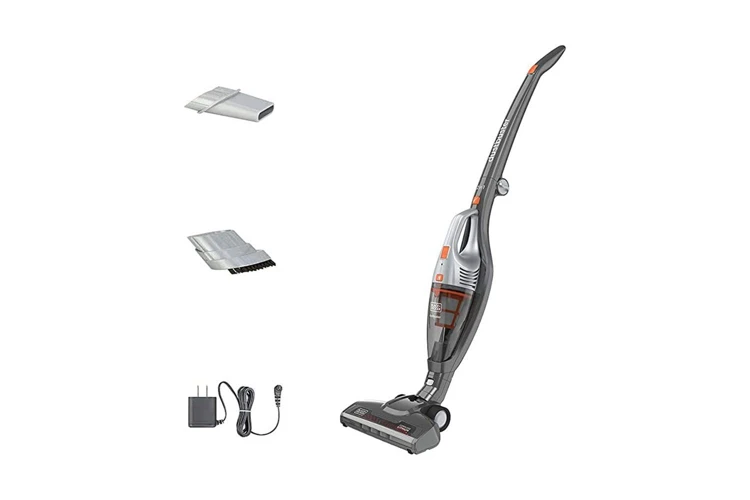
When you’re an asthma or allergy sufferer, even the simplest things like household cleaning can be a challenge. However, cleaning is essential to keep your home free from dust, pet dander, and other irritants that can cause breathing difficulties. This is where quiet smart vacuum cleaners come in handy. These innovative cleaning devices not only suck up dirt and dust, but they do so efficiently and with less noise. Let’s explore how using quiet smart vacuum cleaners can benefit those with asthma and allergies.
Reduces Exposure to Allergens
One of the key benefits of using quiet smart vacuum cleaners for allergy and asthma sufferers is that it helps to reduce exposure to allergens. Allergens are substances such as dust mites, pet dander, pollen, and mold spores that can trigger allergic reactions and worsen asthma symptoms. Regular vacuuming with a high-quality vacuum cleaner can help to reduce the amount of these allergens in your home.
For example, dust mites are a common trigger for allergies and asthma. These tiny insects live in dust and thrive in warm, humid environments. They can be found in bedding, carpets, and upholstered furniture. By vacuuming regularly with a quiet smart vacuum cleaner that has a HEPA filter, you can effectively remove dust mites from your home and reduce your exposure to these allergens.
Pet allergens are another common trigger for allergies and asthma. These allergens are found in pet dander, saliva, and urine. If you have pets, vacuuming regularly with a quiet smart vacuum cleaner can help to remove these allergens from your carpets and upholstery. Additionally, some quiet smart vacuum cleaners come with special pet hair attachments that make it easier to clean pet hair from furniture and floors.
Pollen is yet another common allergen. Pollen is a fine powder produced by plants and carried by the wind. When pollen lands on surfaces in your home, it can trigger allergic reactions in sensitive individuals. By vacuuming regularly with a quiet smart vacuum cleaner, you can effectively remove pollen from your home and reduce your exposure to this allergen.
Finally, mold is a type of fungus that thrives in damp environments. It can be found in bathrooms, kitchens, and other areas with high humidity. Mold spores can trigger allergic reactions and worsen asthma symptoms. By vacuuming regularly with a quiet smart vacuum cleaner, you can effectively remove mold spores from your home and reduce your exposure to this allergen.
Using a quiet smart vacuum cleaner can help to reduce your exposure to a variety of allergens, including dust mites, pet dander, pollen, and mold spores. Regular vacuuming with a high-quality vacuum cleaner that has a HEPA filter can significantly improve the air quality in your home and reduce your risk of allergic reactions and asthma symptoms.
Improves Air Quality
One of the most significant benefits of using Quiet Smart Vacuum Cleaners for Allergy and Asthma sufferers is that it helps improve the air quality within the home. Allergens such as dust, pollen, and pet dander can accumulate in carpets, upholstery, and other surfaces, but a quality vacuum cleaner can effectively remove these irritants from the air. Here are some ways that using a Quiet Smart Vacuum Cleaner can improve the air quality in your home:
| Benefits | Description |
|---|---|
| Removes Allergens | Quiet Smart vacuum cleaners are designed to have strong suction power and to pick up even the tiniest dust particles, pet hair and other allergens that lurk on floors and carpets. Once these microscopic bits of debris are lifted up from the surface of the carpet or floor, they are trapped in the vacuum cleaner’s dustbin or HEPA filter, resulting in a cleaner, healthier living environment. |
| Prevents Dust Accumulation | Ordinary vacuum cleaners may stir up dust particles rather than suctioning them up which results in unhealthy environment to breathe. Quiet Smart vacuum cleaners, on the other hand, are specifically designed to vacuum with high suction power and quiet running motors that can inhale the smallest dust particles. As a result, the dust is prevented from accumulating, improving the air quality of your home and making breathing easier. |
| Effective for Pet Owners | For pet owners, a Quiet Smart vacuum cleaner can be an invaluable tool in maintaining clean air. Pet hair and dander can lead to sneezing, allergies, and respiratory issues, but using a vacuum cleaner with a HEPA filter can reduce the amount of pet hair and allergens in the air. This not only ensures the health of the pet owner but also makes the house overall a healthier environment. |
Improving the air quality with the help of Quiet Smart Vacuum Cleaners is a step toward a healthier home environment for allergy and asthma sufferers, and all other family members. By regularly vacuuming surfaces, furniture, and carpets with a Quiet Smart Vacuum Cleaner, you can ensure a cleaner living space and promote better health for all those living in your home.
Less Noisy Cleaning
One of the main benefits of using a quiet smart vacuum cleaner, especially for allergy and asthma sufferers, is the reduction in noise during cleaning. Traditional vacuum cleaners can be incredibly loud and disruptive, which can be a problem for those with allergies or asthma. The loud noise can exacerbate symptoms and make cleaning an uncomfortable experience.
Noisy vacuum cleaners can cause:
- Discomfort
- Stress
- Headaches
- Tinnitus
Quiet smart vacuum cleaners, on the other hand, are specifically designed to operate with minimal noise. These machines use advanced technology, including sound insulation and specially designed motors, to keep noise levels to a minimum. This is particularly helpful for those who need to clean during the day or those who have sleeping children or pets.
In addition to being less noisy overall, quiet smart vacuum cleaners also typically have “quiet mode” settings. This feature allows you to adjust the suction power and noise level of the vacuum cleaner to suit your needs. When cleaning during the day, you may want to use the quiet mode setting to minimize noise, whereas when cleaning a particularly dirty area, you may want to use a higher suction power to get the job done more efficiently.
Using a quiet smart vacuum cleaner also provides a more enjoyable cleaning experience. Not only is the noise reduced, but the vibrations from the machine are also minimized. This means you can enjoy the benefits of a clean home without the discomfort associated with loud and disruptive traditional vacuum cleaners.
The reduced noise level of quiet smart vacuum cleaners provides a more comfortable and enjoyable cleaning experience for allergy and asthma sufferers, making it easier to maintain a clean home without compromising on comfort or health.
Eases Symptoms
For allergy and asthma sufferers, experiencing regular symptoms such as coughing, sneezing, and wheezing can be frustrating and debilitating. However, using a Quiet Smart Vacuum Cleaner can help ease these symptoms and provide relief. Here are some ways in which Quiet Smart Vacuum Cleaners can help ease symptoms:
| Benefit | Description |
|---|---|
| Allergen Removal | Quiet Smart Vacuum Cleaners are designed with HEPA filters that can effectively capture and remove allergens from your home. This means that dust mites, pet allergens, pollen, and mold spores are all effectively removed from your environment, reducing your exposure to these triggers. |
| Improved Air Quality | With the efficient cleaning capabilities of Quiet Smart Vacuum Cleaners, the air quality in your home can be improved. Without the presence of allergens in the air, symptoms such as sneezing and coughing can be diminished, making it easier for asthma and allergy sufferers to breathe. |
| Noise Reduction | The quiet operation of these vacuum cleaners can be incredibly beneficial for individuals who suffer from asthma and allergies. Regular vacuum cleaners can be noisy and disruptive, causing discomfort and even exacerbating symptoms. The reduced noise level of Quiet Smart Vacuum Cleaners makes them a better choice for those seeking relief. |
| Less Physical Exertion | Traditional vacuum cleaners can be quite heavy and difficult to use for many individuals. For those with asthma and allergies, their symptoms can make it even harder to operate a vacuum cleaner. However, Quiet Smart Vacuum Cleaners are often lightweight and have smart features that make cleaning easier and less physically exerting. |
By reducing exposure to allergens, improving air quality, reducing noise levels, and making cleaning less physically exerting, Quiet Smart Vacuum Cleaners can help ease the symptoms of asthma and allergies. These benefits can lead to a more comfortable and enjoyable living environment for individuals who suffer from these conditions.
Tips on Using Quiet Smart Vacuum Cleaners for Best Results
Now that you’ve invested in a quiet smart vacuum cleaner with HEPA filters, it’s important to use it correctly for optimal results. To help you get the most out of your new cleaning tool, we’ve compiled some tips and tricks for using it effectively. By following these recommendations, you can take full advantage of the benefits of quiet smart vacuum cleaners for allergy and asthma sufferers. So, let’s dive into the details and maximize the performance of your cleaning device!
Vacuum Regularly
Regular vacuuming is essential for allergy and asthma sufferers to keep their home free of allergens. Vacuuming at least once or twice a week with a quiet smart vacuum cleaner can help to reduce exposure to allergens and ease allergy symptoms. Here are some tips for vacuuming regularly to get the best results:
- Schedule a Regular Vacuuming Routine: Set a specific day and time for vacuuming your home regularly. This could be once or twice a week, depending on how much foot traffic your home sees. Having a routine will help you stick to your vacuuming schedule and ensure that allergens are regularly removed from your home.
- Focus on High Traffic Areas: Pay attention to the areas in your home that see the most foot traffic, such as living room, bedrooms, and hallways. These areas are more vulnerable to accumulating dust and allergens, and should be vacuumed more frequently than other areas of your home.
- Move Furniture and Objects: Make sure to remove small objects and furniture from the floor before you begin vacuuming, this will ensure that you can clean every nook and cranny, especially the hard-to-reach areas. Moving furniture also allows you to vacuum the entire surface, including the bottom of your furniture.
- Use Slow and Steady Motion: Use slow and steady motions when vacuuming, focusing on each area for a few seconds before moving onto the next spot. This approach helps to ensure that the vacuum thoroughly cleans each area, removing as many allergens as possible.
- Be Thorough: Don’t forget to vacuum the edges of the room, corners, and baseboards using appropriate attachments to reach all these hard-to-reach areas.
Following these tips will help you vacuum your home regularly with a quiet smart vacuum cleaner and reduce the number of allergens found in your home, enhancing air quality and contributing to better health for allergy and asthma sufferers.
Use Appropriate Attachments
Using the right vacuum attachments is crucial when it comes to achieving the best results when cleaning your home. Depending on the surface you plan to clean, different attachments may be required to ensure a thorough job. Here are some of the most common attachments that you can use with your quiet smart vacuum cleaner and what they are best used for:
| Attachment | Best Use |
|---|---|
| Dusting brush | Perfect for cleaning delicate surfaces like lampshades, curtains, and picture frames. The soft bristles prevent scratches or damage. |
| Crevices tool | Effective for cleaning tight spaces like between cushions, in corners, or behind furniture. This will prevent you from having to move heavy furniture around when cleaning. |
| Upholstery tool | Great for cleaning furniture, stairs, and mattresses. It will pick up pet hair and dust without causing damage to the surface. |
| Hard floor tool | This attachment is specifically designed for cleaning hard floors like tile, laminate, or hardwood. It usually comes with a microfiber pad that will pick up dirt and debris without scratching the surface. |
| Pet hair tool | It is designed to pick up pet hair effectively. It is great for removing pet fur from carpets, furniture, and car interiors. |
Using the right attachments with your quiet smart vacuum cleaner will make cleaning easier and more efficient. It will help you achieve optimal results, removing all dust and allergens in your home. Avoid using the wrong attachments as this may result in damage to your surfaces or ineffective cleaning. Remember to read and refer to your vacuum cleaner manual before choosing and fitting any attachment.
Change Filters Regularly
Regularly changing filters is an essential aspect of maintaining the performance of a Quiet Smart Vacuum Cleaner. The filters play a crucial role in trapping allergens and preventing them from escaping back into the air you breathe. Over time, the filters may become clogged with dirt, dust, and other particles, decreasing their effectiveness and potentially worsening allergic reactions.
Here are some tips for changing your Quiet Smart Vacuum Cleaner’s filters:
- Refer to the manufacturer’s instructions for the recommended filter replacement frequency.
- Consider using high-efficiency HEPA filters for maximum allergen trapping power.
- Take note of any signs of reduced suction power or unusual noise from the vacuum, which may indicate a need for filter replacement.
- Ensure that you have the correct replacement filters for your vacuum model before starting the replacement process.
- Switch off and unplug the vacuum before replacement.
- Carefully remove the old filter and dispose of it correctly.
- Insert the new filter into place, ensuring it is securely attached.
- Restart the vacuum and run for a few minutes to ensure proper installation.
By following these guidelines, you can ensure that your Quiet Smart Vacuum Cleaner is always performing at its best and protecting you from allergens. Don’t overlook the importance of regularly changing filters, as it could make all the difference in your respiratory health.
Empty the Dustbin Frequently
Emptying the dustbin frequently is an essential part of maintaining your Quiet Smart Vacuum Cleaner and ensuring its optimal performance. Overfilled dustbins can lead to reduced suction power, making cleaning less efficient and less effective at removing allergens and asthma triggers. Here are some tips to help you make the most of your Quiet Smart Vacuum Cleaner by keeping its dustbin clean and empty at all times:
- Set a schedule: Depending on how frequently you use your vacuum cleaner, set a schedule for emptying the dustbin. For most homes, it is recommended to empty the dustbin after every use or at least once a week.
- Be mindful of the capacity: Keep an eye on the dustbin’s capacity as you vacuum. Some models have dustbin indicators that show when it is time to empty the bin. If your vacuum cleaner doesn’t have one, check the bin’s level frequently to avoid overfilling.
- Be careful when emptying: Emptying the dustbin can be messy and release allergens into the air. To minimize exposure to allergens and asthma triggers, use a dustbin that is easy to remove and empty, and do so in an outdoor trashcan or bag. Wear gloves, a mask, and protective clothing when emptying the dustbin, especially if you have severe allergies.
- Clean the dustbin: After emptying the dustbin, take the opportunity to clean it thoroughly. Some dustbins are washable, while others need to be wiped down with a damp cloth. Make sure the dustbin is completely dry before reinserting it into the vacuum cleaner.
By following these tips, you can ensure that your Quiet Smart Vacuum Cleaner remains in excellent working condition, providing you with efficient cleaning and improved air quality for a cleaner and healthier home environment.
Conclusion
In conclusion, switching to a Quiet Smart vacuum cleaner is a wise move for anyone dealing with asthma and allergies. The high-quality, advanced cleaning technology of these machines can help address the root causes of allergies and asthma. With the use of HEPA filters, these vacuums effectively trap microscopic allergens and pollutants better than conventional vacuum cleaners. Quiet Smart vacuums also have a remarkable ability to reduce unwanted noise levels, which is a godsend for those sensitive to loud sounds.
By investing in a Quiet Smart vacuum, you are placing an excellent tool at your disposal that can significantly mitigate the harmful effects of allergens in the environment. Regular vacuuming with a Quiet Smart vacuum cleaner can make a significant difference in the quality of air in your home, helping you breathe better and minimize the impact of allergens on your health. Use proper attachments, clean filters regularly, and remember to empty the dustbin frequently to get the best results.
In this article, we have seen how a Quiet Smart vacuum cleaner can benefit anyone living with allergies and asthma. We have covered how allergens like dust mites, pollen, pet dander, and mold can trigger asthma episodes and allergic reactions. However, with a Quiet Smart vacuum cleaner, you can eliminate these allergens from your immediate surroundings quietly, efficiently and smartly. So, make the switch and experience a cleaner, quieter, and more breathable home with a Quiet Smart vacuum cleaner.
Frequently Asked Questions
How often should I vacuum my home if I have allergies or asthma?
It’s recommended that you vacuum at least once a week to reduce the amount of allergens in your home. However, you may need to vacuum more frequently depending on the severity of your allergies or asthma.
Can quiet smart vacuum cleaners effectively remove pet hair?
Yes, many quiet smart vacuum cleaners come with specialized attachments to remove pet hair from carpets, furniture, and other surfaces.
How do HEPA filters help with allergies?
HEPA filters are designed to capture a high percentage of allergens, such as dust mites, pollen, and pet dander, from the air. This helps to reduce the amount of these allergens that are circulating in your home.
Are quiet vacuum cleaners less powerful than loud ones?
No, quiet vacuum cleaners can still be powerful and efficient at cleaning. The noise level doesn’t necessarily correlate with the cleaning ability.
Can using a smart vacuum cleaner save time?
Yes, smart vacuum cleaners can save you time by cleaning your home automatically without requiring you to be present. Additionally, many models come with features such as mapping and scheduling functions to help optimize cleaning efficiency.
What are some examples of smart features on vacuum cleaners?
Examples of smart features on vacuum cleaners include voice control, mapping capabilities, scheduling functions, and automatic docking and recharging.
Why is it important to empty the dustbin frequently?
Emptying the dustbin frequently helps to ensure that the vacuum cleaner is functioning at its best and doesn’t become clogged with debris. It also helps to reduce the amount of allergens that are released back into the air.
Can using a quiet smart vacuum cleaner help with other respiratory issues?
Yes, using a vacuum cleaner with a HEPA filter can help reduce exposure to other irritants, such as smoke and chemical fumes, which can exacerbate respiratory issues like asthma.
Is it safe to use a smart vacuum cleaner with pets in the home?
Yes, smart vacuum cleaners are generally safe to use around pets. However, it’s important to supervise pets while the vacuum is running, as some may become frightened and react in unpredictable ways.
What should I look for when choosing a quiet smart vacuum cleaner?
When choosing a quiet smart vacuum cleaner, look for a model with a low decibel rating, strong suction power, and a high-quality HEPA filter. Smart features such as mapping and scheduling can also help optimize cleaning efficiency.

